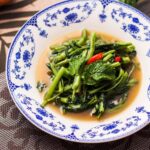Italy’s rich culinary tradition is testament to its centuries-old customs and deep connection with the land. Every aspect of Italian food is influenced by the rich history of the country and its dedication to maintaining authentic flavors. We invite you to join us for an immersion journey into Italy’s production methods and the flavors unique to each region.
1. From farm to table: Affirming food production traditions
Focus on locally sourced ingredients
Italian food is known for its use of fresh and locally-sourced ingredients. Farm-to-table is deeply embedded in Italian traditions. Each dish celebrates the seasonal bounty.
Traditions of Agriculture
Learn about the Italian agricultural traditions which have lasted for many generations. Witness the love and care that go into the cultivation of ingredients used in Italian cuisine.
2. Pasta & Grains: Growing Italian Staples
Italian Cuisine with Grains
Since ancient times, grains, especially wheat, are at the core of Italian cuisine. It is believed that the cultivation of durum, which can be used for pasta, bread and other products, represents Italian cuisine.
Artisanal Pasta Production
Discover the art of pasta-making. Local pasta-making workshops are a great place to see how skilled craftsmen use traditional methods. Each shape, from delicate tagliatelle and robust pappardelle to a variety of shapes in between, has its own story.
3. Olive Groves and Vineyards – Nurturing Flavorful Foundations
Olive Oil Production
The production of olive oil in Italy is an ancient tradition. Experience the harvesting of ancient olive trees, the meticulous pressing, and the care that goes into producing Italy’s best oils.
World of Italian Wines
Travel through Italy’s scenic vineyards to discover the wines that are so acclaimed. Each wine region has its own unique story of tradition and terroir.
4. Making Cheese: Artisanship and Variety of Flavor
The Art of Making Cheese
Italian cheeses showcase the craftsmanship of Italy and its regional diversity. Discover family-run dairies producing Parmigiano Reggiano, Pecorino Romao.
Ageing and maturity
Learn about the complex process of maturing and aging cheeses. Learn how the environment and time affect the flavor of cheeses.
5. Culinary heritage: regional dishes and flavors
Regional Specialties
Each Italian region has its own special dishes that are influenced by the local traditions and ingredients. Enjoy the flavors of Tuscany’s ribollita and Sicily’s arancini. The Margherita Pizza of Naples is also a piece of history.
Nonna’s Kitchen: An heirloom recipe
Visit the Italian grandmothers who have been preserving culinary traditions for generations. Discover recipes handed down from generation to generation, which preserve the authentic Italian cuisine.
6. Slow Food Movement: Preserving our Past
Slow Food Philosophy
Discover how this movement aims to protect biodiversity and promote sustainable food practices. Learn how the Slow Food movement aims to promote sustainability and biodiversity by promoting sustainable food practices .
Ark of Taste – Recovering Forgotten Flavors
Discover the Ark of Taste – a catalogue of traditional food from all over the world. See how Italian ingredients such as San Marzano tomato and Piemontese Hazelnuts, are celebrated and preserved.
The conclusion of the article is:
Italy’s food traditions reflect its strong connection with the land, respect for ancient practices and unwavering dedication to taste. Each region has its own unique food and dishes, from the rolling hills in Tuscany to charming villages in Sicily. Immersing ourselves into these culinary traditions allows us to not only enjoy the Italian flavors, but also pay tribute to the farmers, artisans and chefs who have helped shape this incredible culinary landscape. Get Italian Catering for your favourite celebrations and make the best memories.




